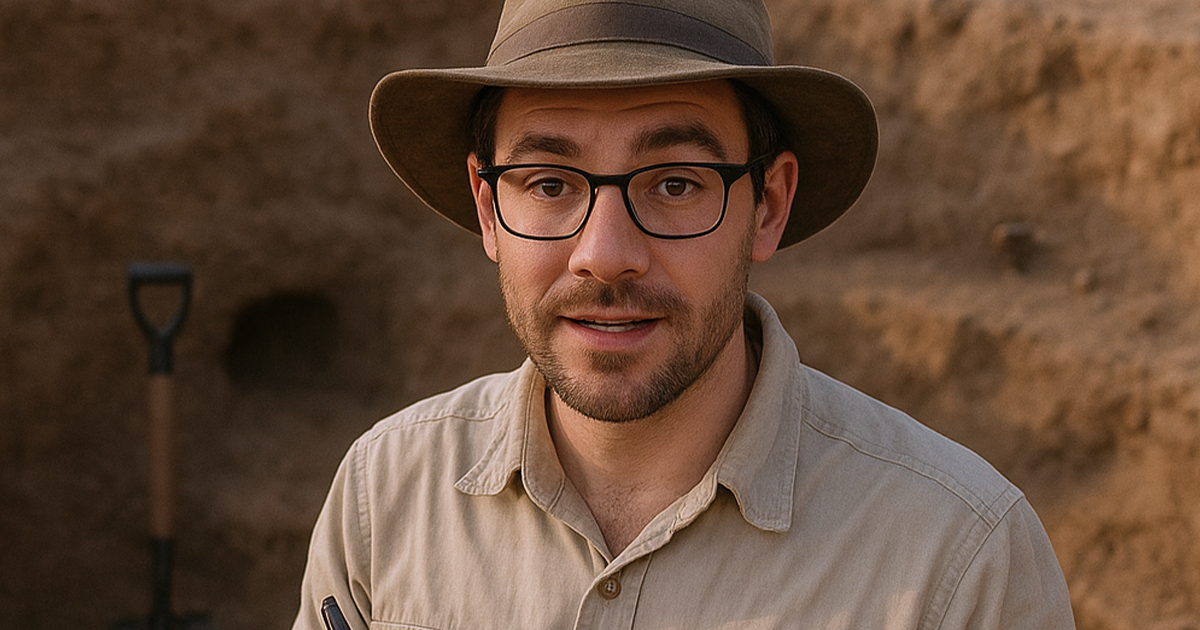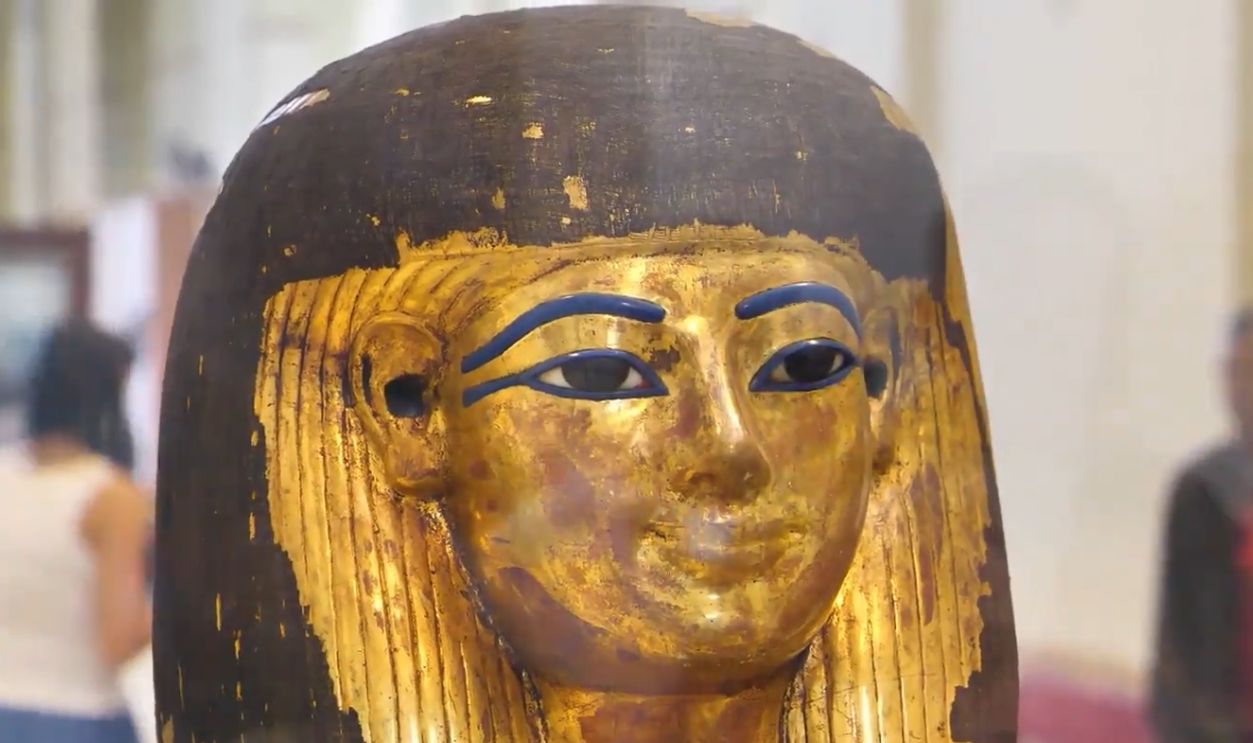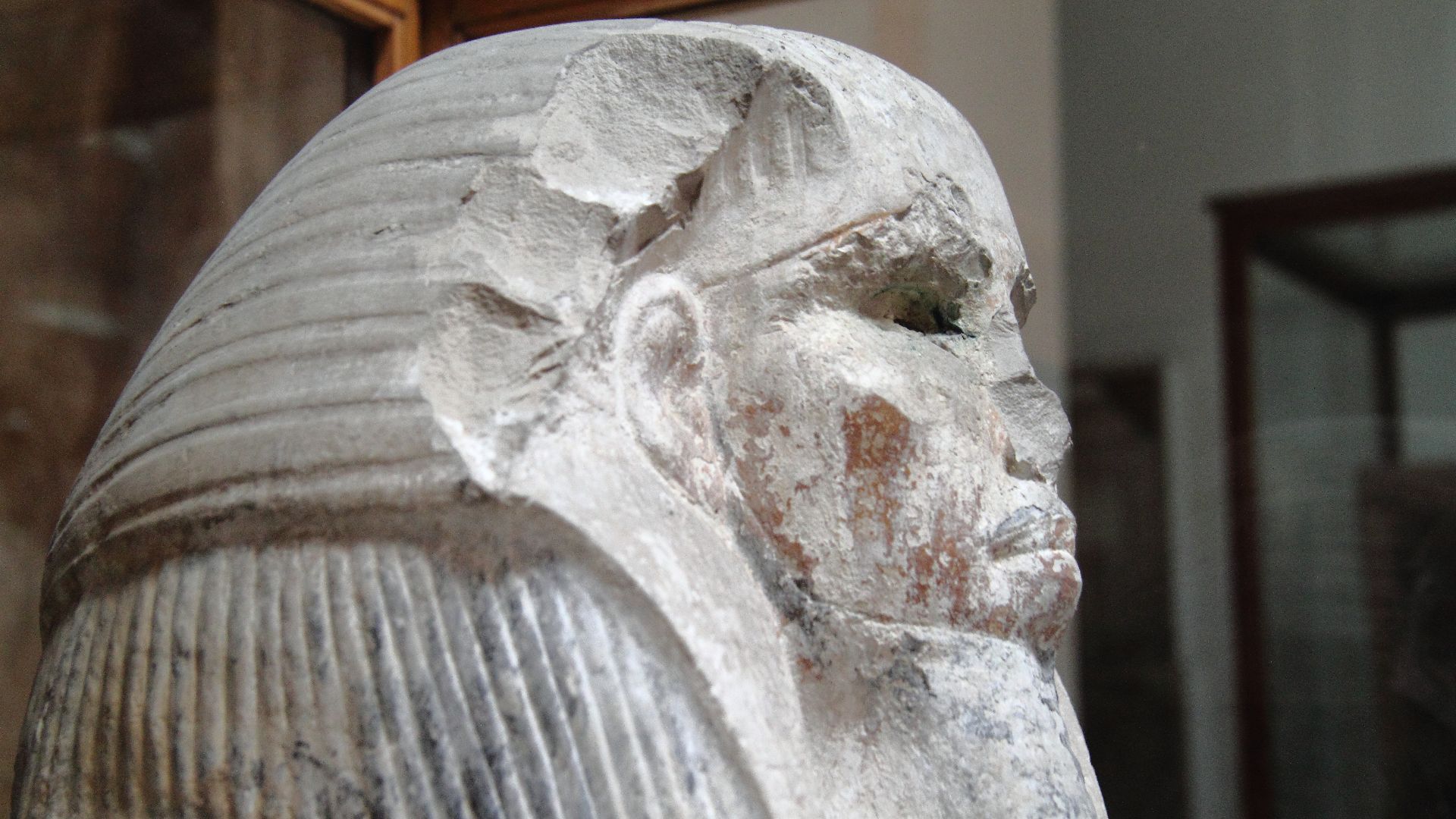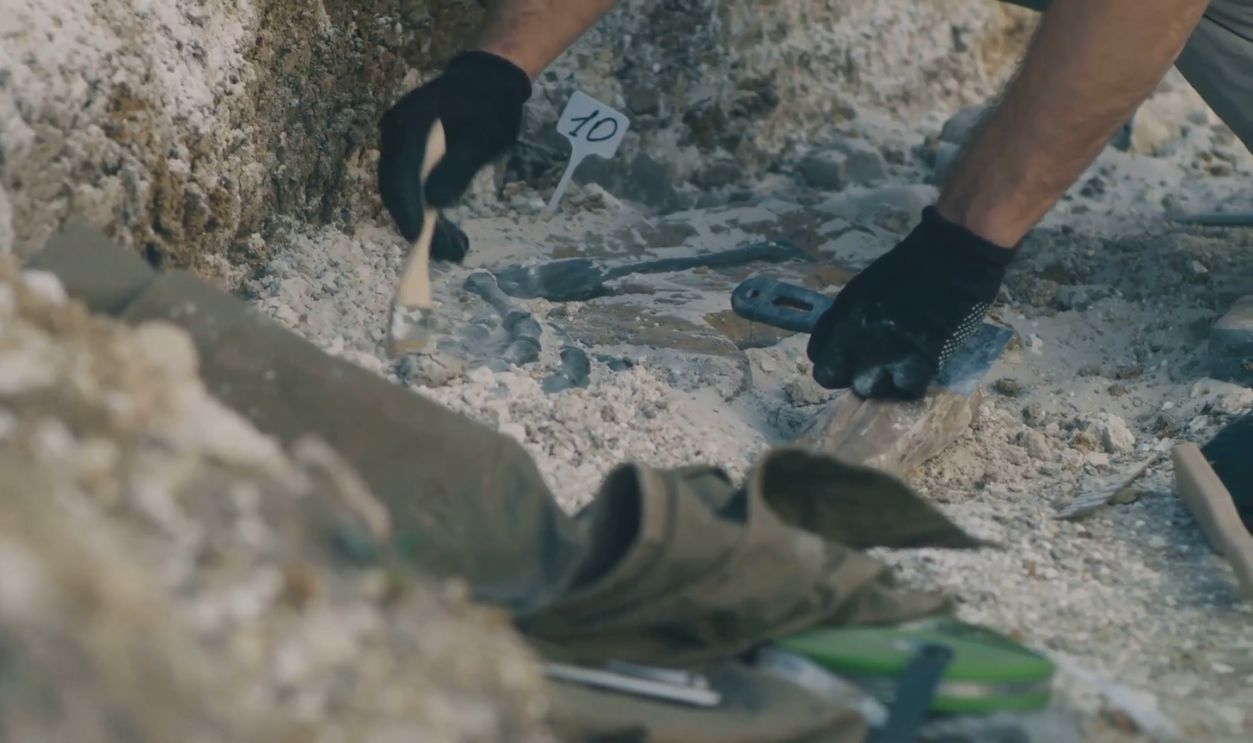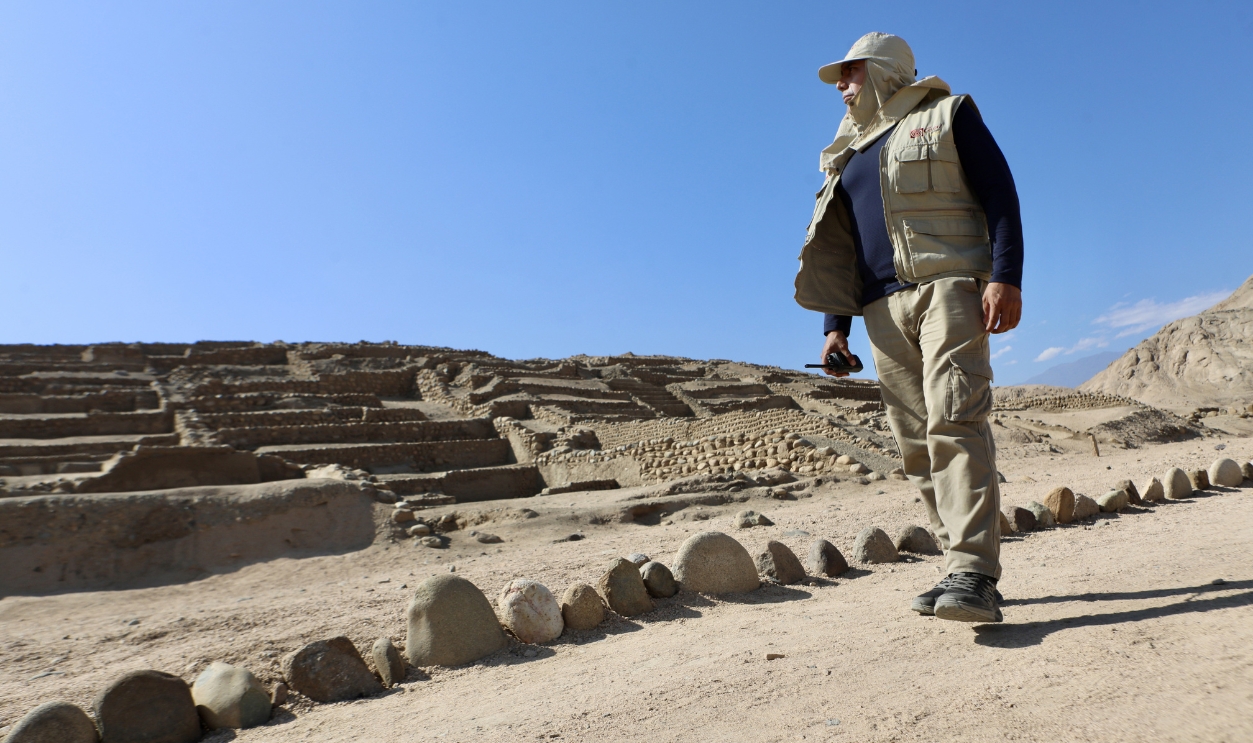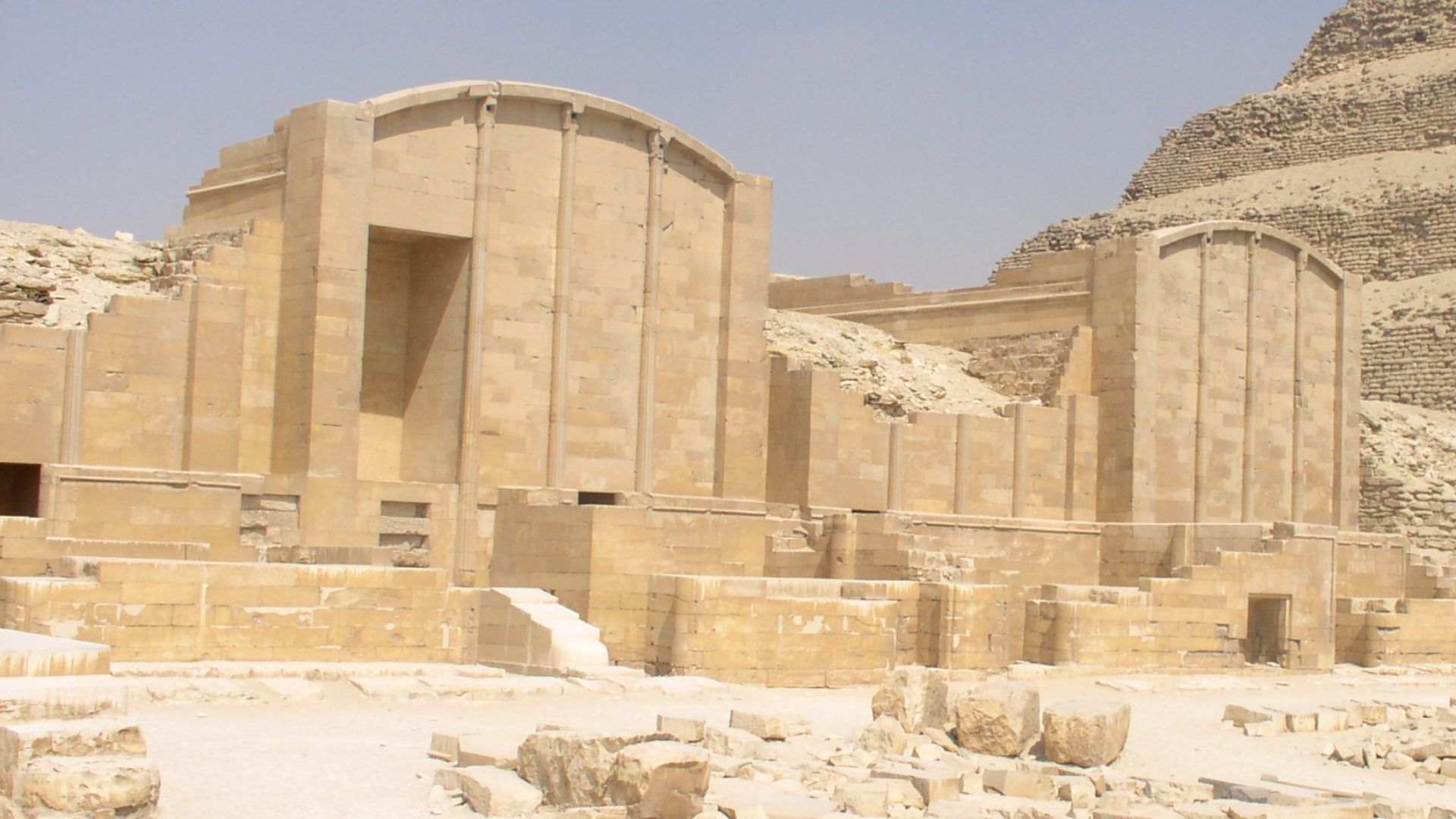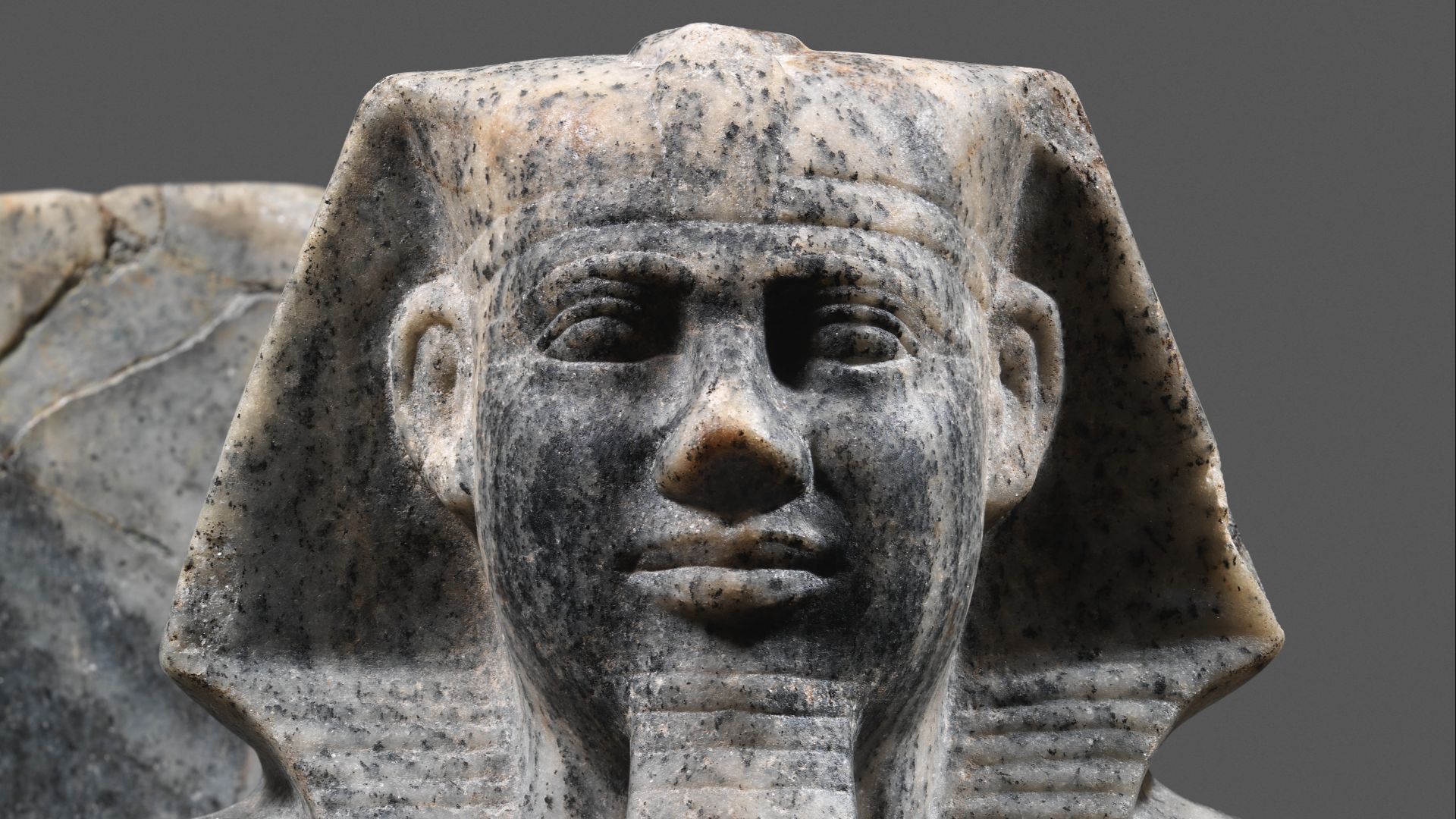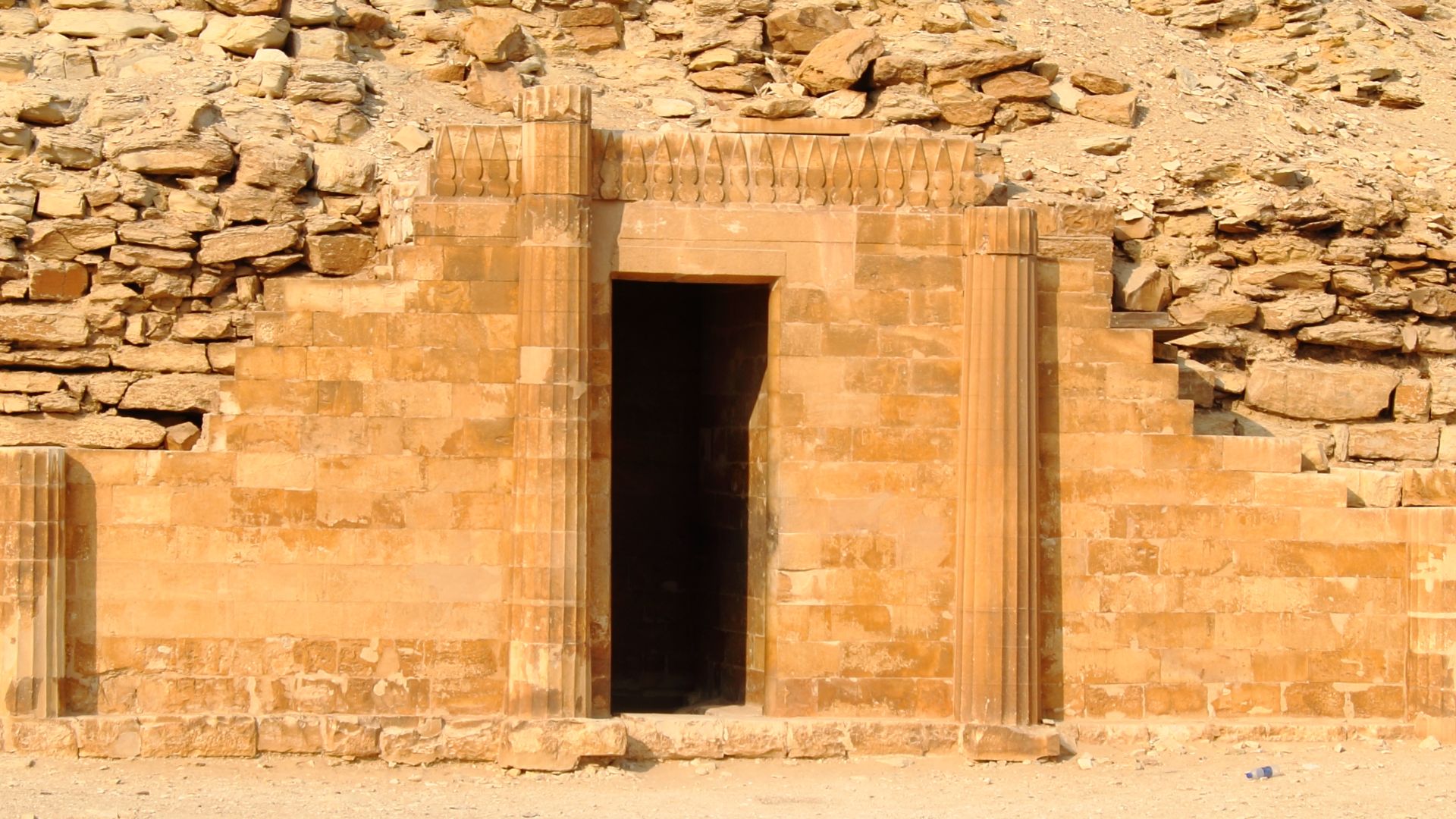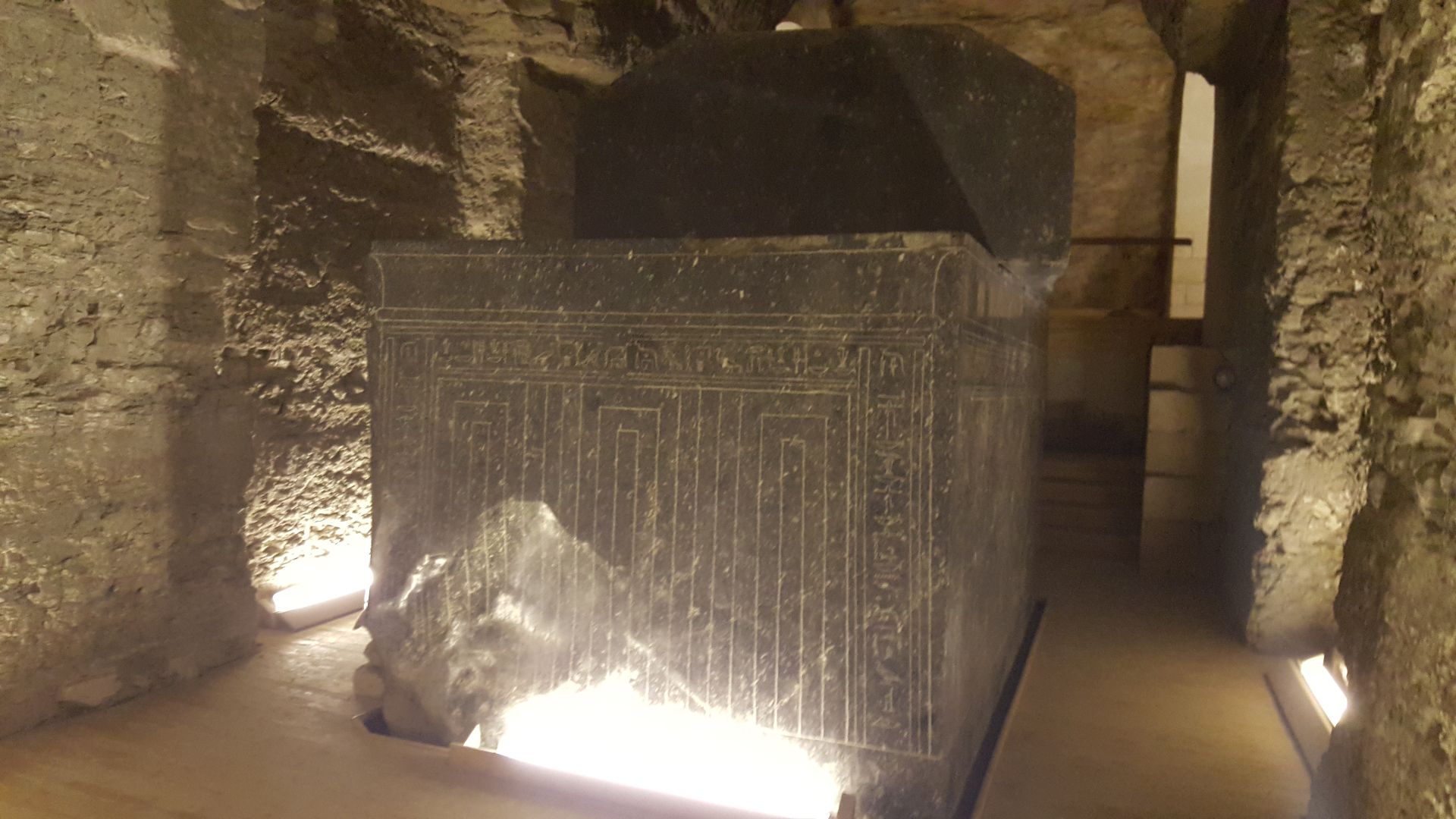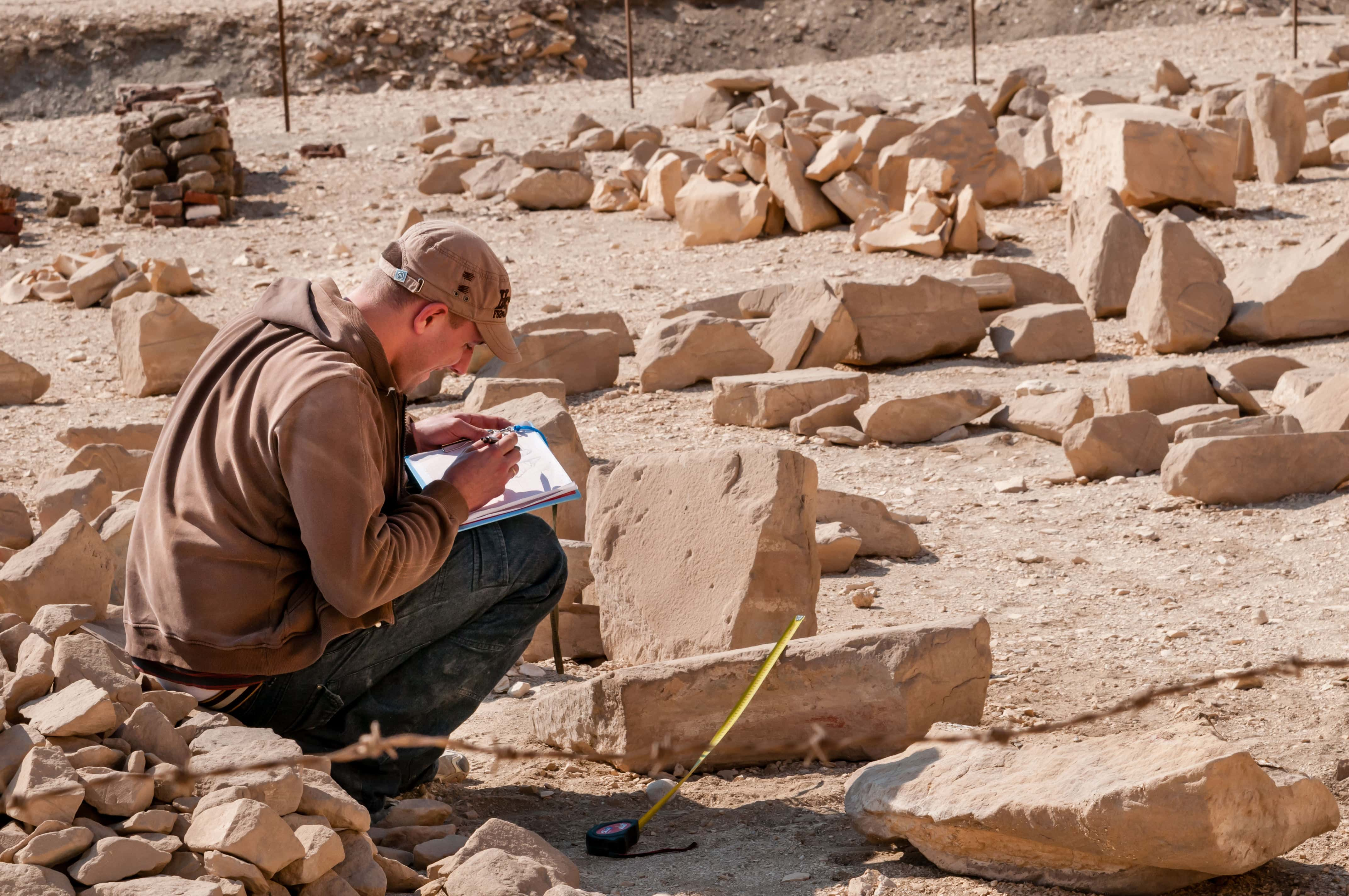The Mysterious Pink Door of Saqqara
In 2024, archaeologists working in the ancient Egyptian necropolis of Saqqara, uncovered something jaw-dropping—a 4,400-year-old tomb with a giant pink granite door. As the team dug deeper, they found that the tomb belonged to a high-ranking prince—and the pink door may have had a chilling purpose.
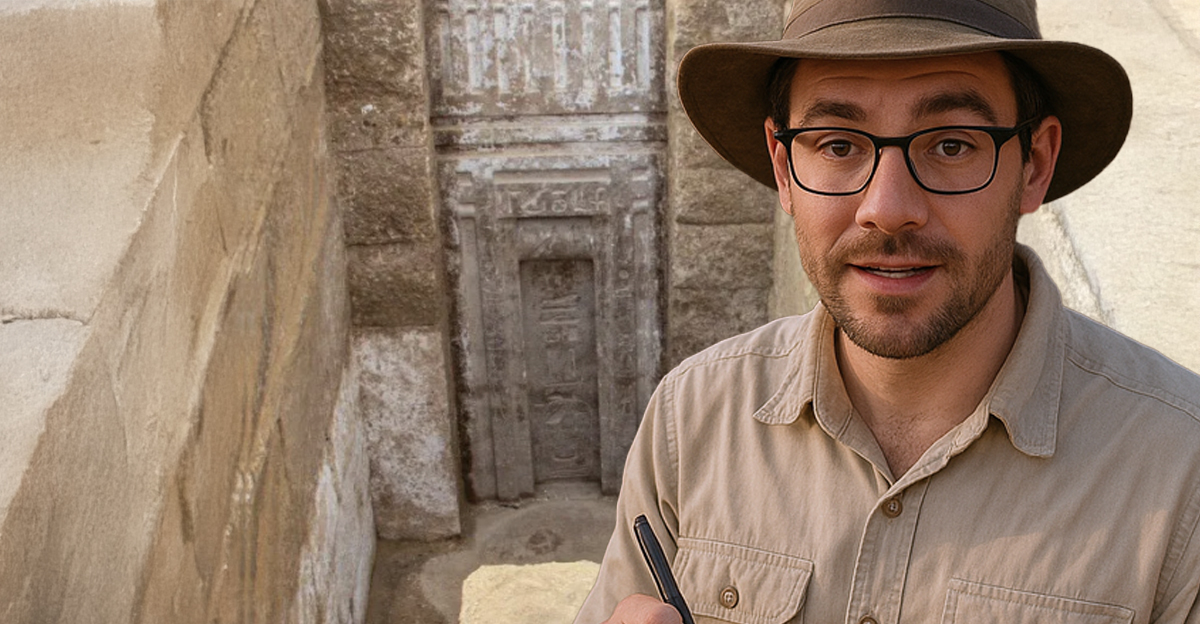
Egypt's Ancient Secret
Saqqara is one of Egypt’s oldest and most sacred cemeteries, located just outside Cairo. It’s packed with ancient tombs and pyramids, including the famous Step Pyramid of Djoser. But even in a place filled with history, this new discovery stands out for its unusual color, scale, and symbolism.
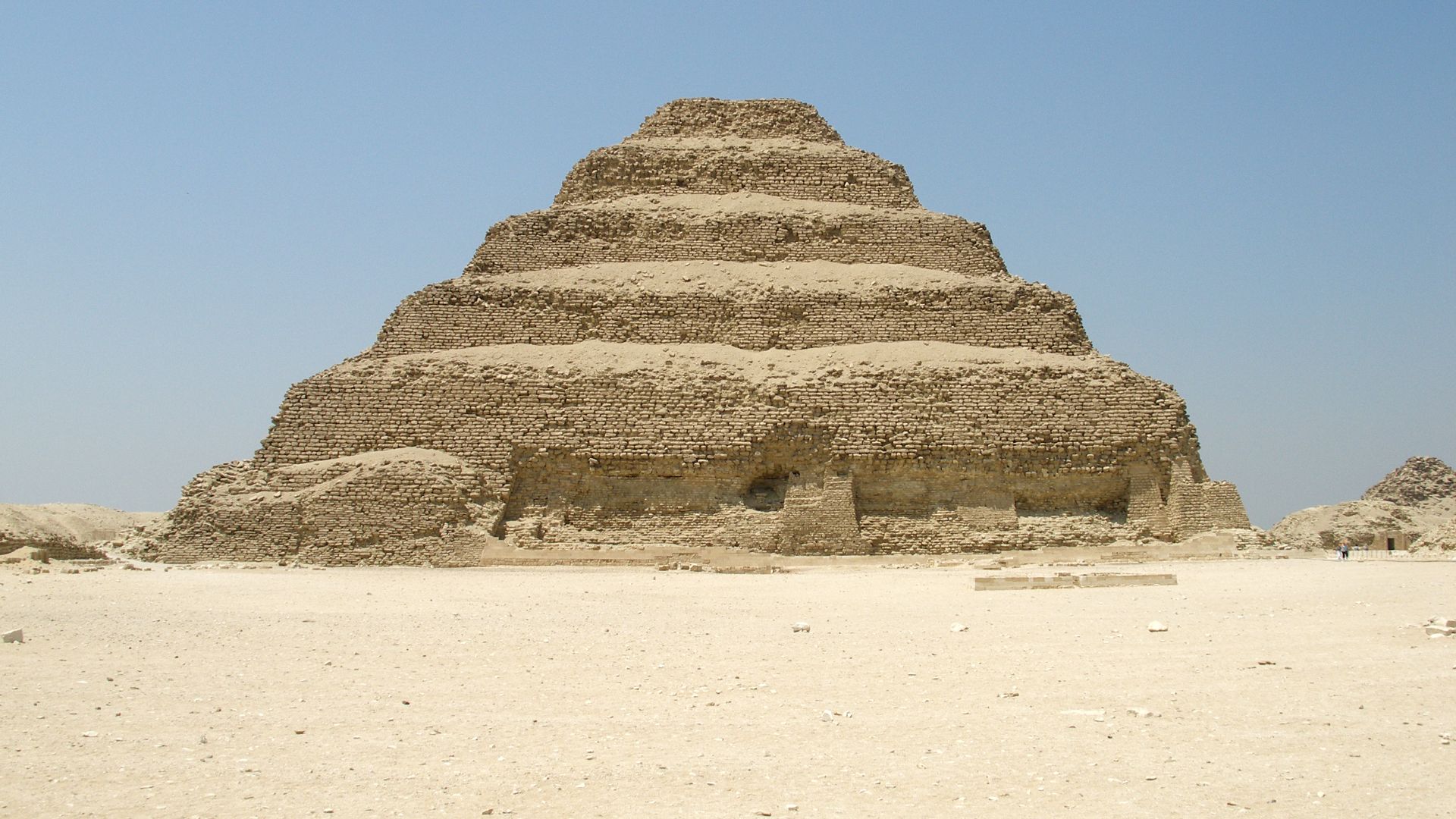 Vyacheslav Argenberg, Wikimedia Commons
Vyacheslav Argenberg, Wikimedia Commons
The Tomb Was Hidden for Millennia
The newly discovered tomb was buried for more than 4,000 years before being revealed in 2024. Archaeologists had been exploring Saqqara as part of an ongoing effort to document and conserve its ancient structures when they stumbled upon this remarkably preserved find.
And who is belongs to is astonishing.
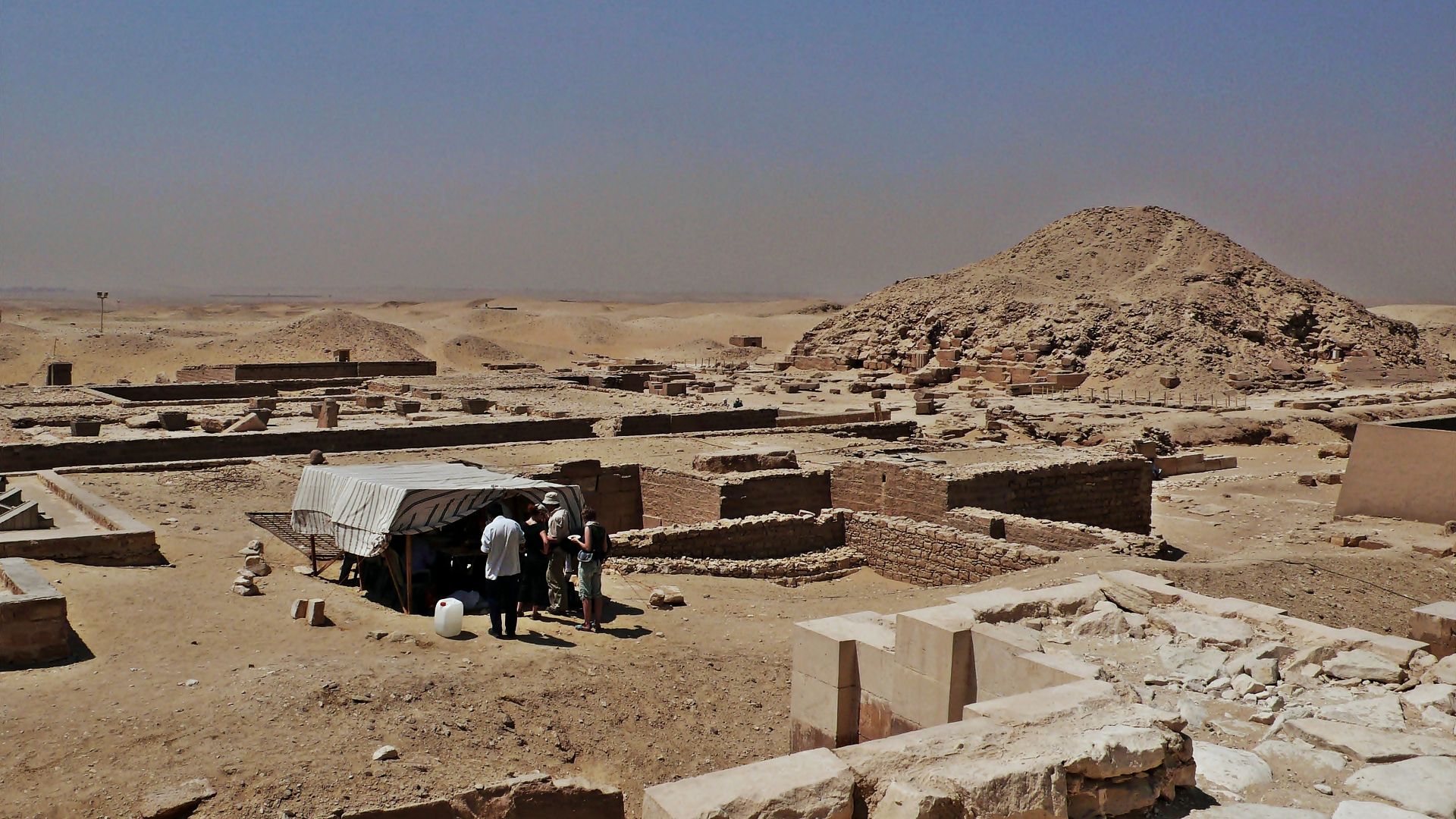 Alberto-g-rovi, Wikimedia Commons
Alberto-g-rovi, Wikimedia Commons
Whose Tomb Is It?
The tomb belongs to Prince Userefre, son of Pharaoh Userkaf, the first ruler of Egypt’s Fifth Dynasty, which reigned around 2465–2458 BCE. He held multiple elite titles, suggesting he was a powerful figure with deep connections to both politics and religion.
And this pink door gave him power even after death.
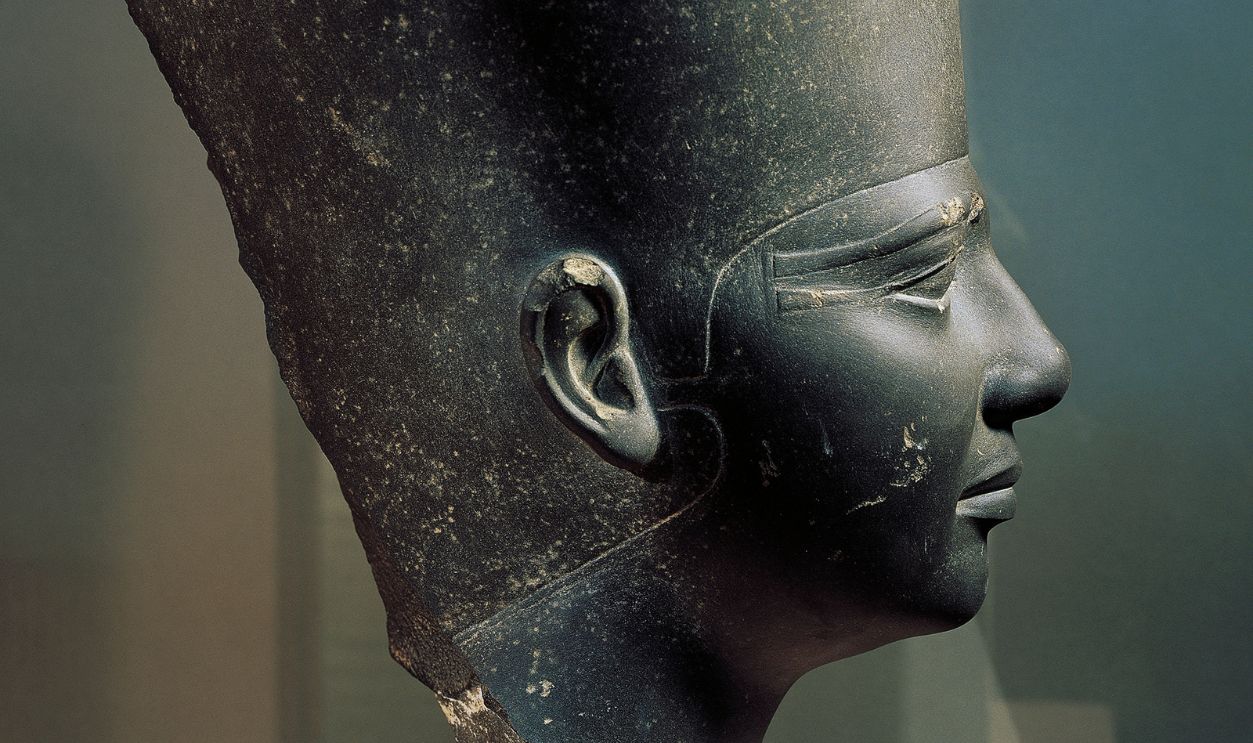 DEA / G. DAGLI ORTI, Getty Images
DEA / G. DAGLI ORTI, Getty Images
The Door Serves a Purpose
At the center of this discovery is a giant pink granite false door—about 4.5 meters tall and 1.2 meters wide. It’s not an actual entrance, but a symbolic one. In ancient Egypt, false doors were thought to let the deceased pass between the worlds of the living and the dead.
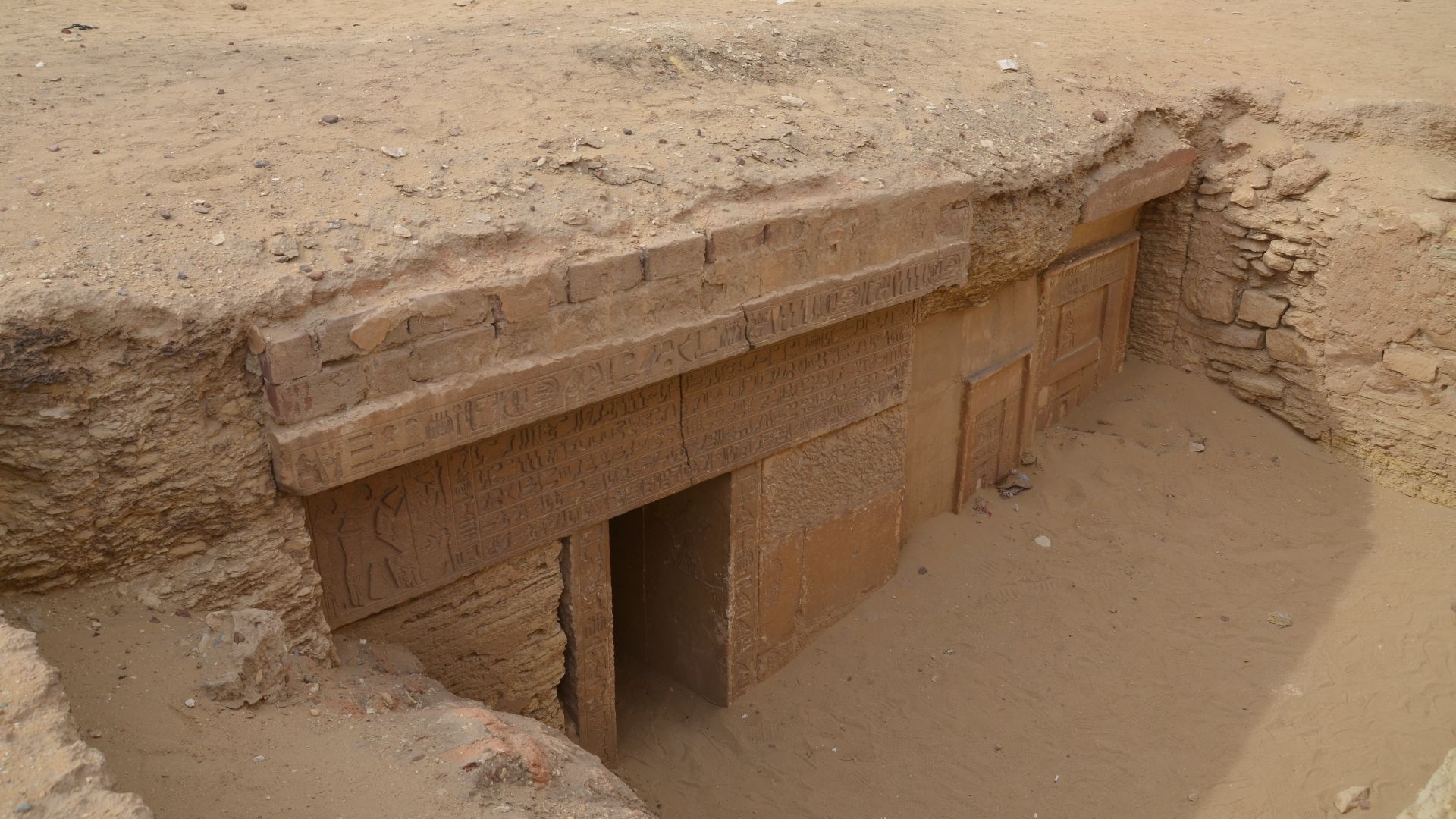 Carole Raddato from FRANKFURT, Germany, Wikimedia Commons
Carole Raddato from FRANKFURT, Germany, Wikimedia Commons
A Gateway Between Worlds
In ancient Egyptian tombs, a false door wasn’t for people—it was for spirits. These carved stone panels allowed the soul (or ka) of the dead to return from the afterlife and receive offerings from the living. This pink door was essentially a spiritual gateway.
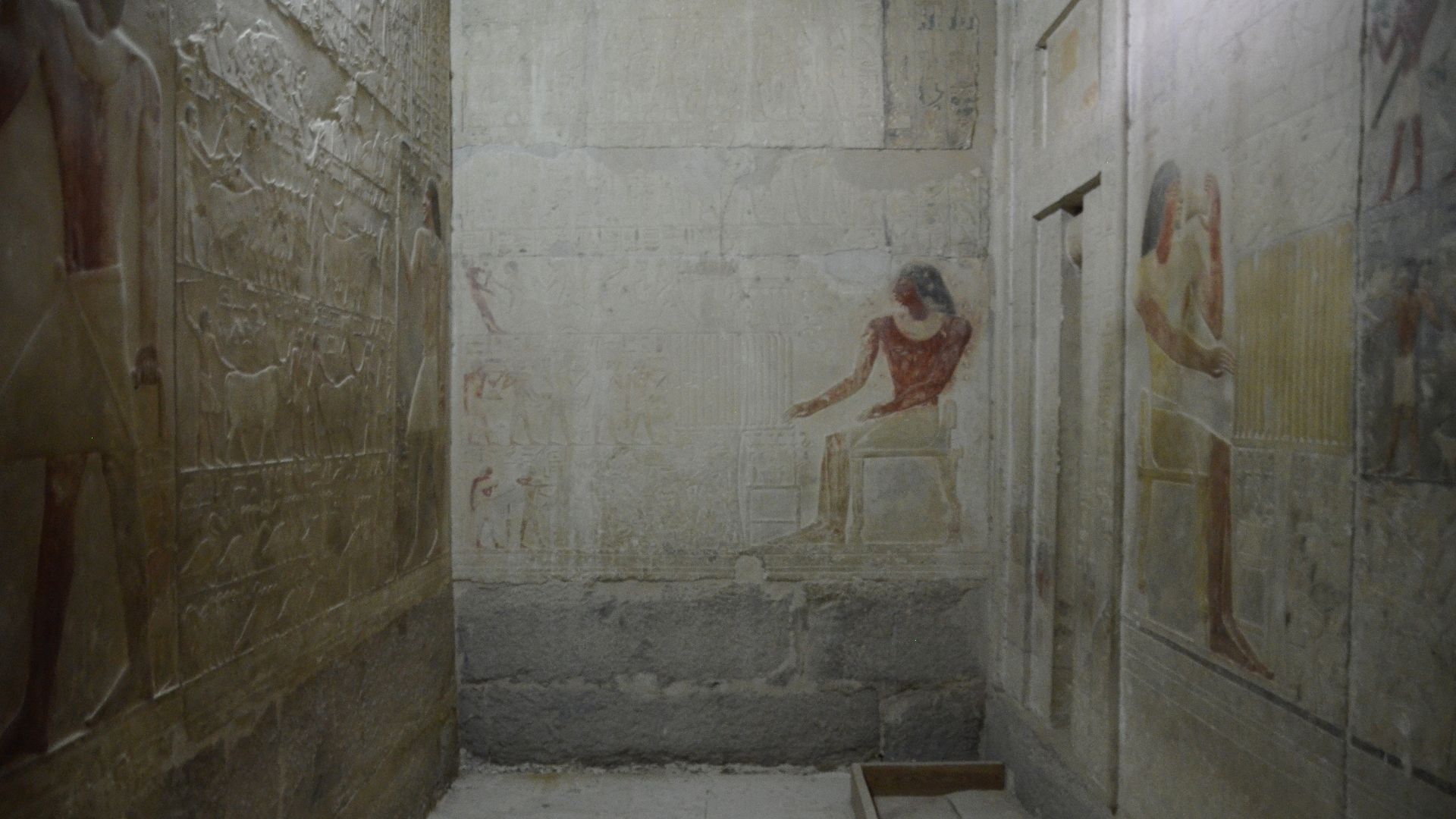 Carole Raddato from FRANKFURT, Germany, Wikimedia Commons
Carole Raddato from FRANKFURT, Germany, Wikimedia Commons
The Inscriptions Tell a Story
The inscriptions on the door list Userefre’s many titles: Hereditary Prince, Judge, Minister, Governor of two regions, Chanting Priest. These were signs of power, status, and religious authority—clues that this tomb belonged to someone important in both court and temple life.
And it's pink for a reason, too.
The Door’s Color Is Rare
Pink granite isn’t just striking—it’s symbolic. Ancient Egyptians chose their stone materials carefully, and granite was reserved for the elite. The pink hue may have come from quarries in Aswan, hundreds of miles away, and its use signals both wealth and sacred significance.
The pink door wasn't all they found.
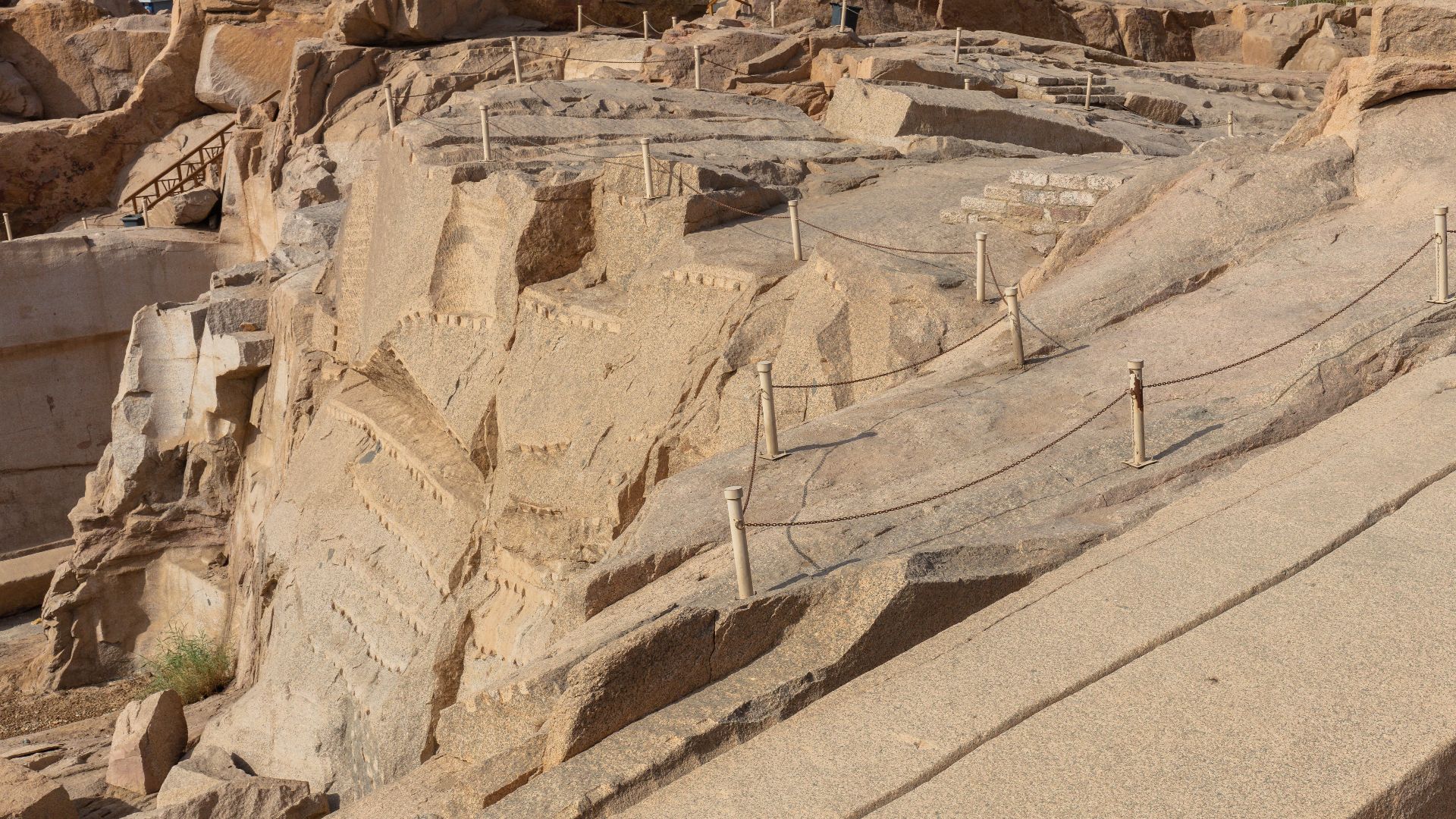 Diego Delso, Wikimedia Commons
Diego Delso, Wikimedia Commons
Another Clue Found Nearby
Alongside the pink false door, archaeologists found a red granite offering table. These tables were used to present food and gifts to the spirits of the dead, part of daily rituals carried out by family members or priests to nourish the soul in the afterlife.
The more they dug, the more they found.
A Mix of Old and New
Interestingly, the tomb contains artifacts from multiple eras. Some statues inside—including figures of King Djoser, his wife, and daughters—were likely reused during the 26th Dynasty, nearly 2,000 years after Userefre’s death. This suggests the tomb may have been repurposed in later centuries.
The placement of the statues tells an even bigger story.
Thirteen Seated Statues Discovered
One of the most intriguing finds: 13 seated pink granite statues, likely representing the prince’s wives or female family members. These statues were placed along the walls of the tomb, reinforcing Userefre’s social and spiritual status. Their expressions and style are remarkably detailed.
But pink wasn't the only symbolic color inside the tomb.
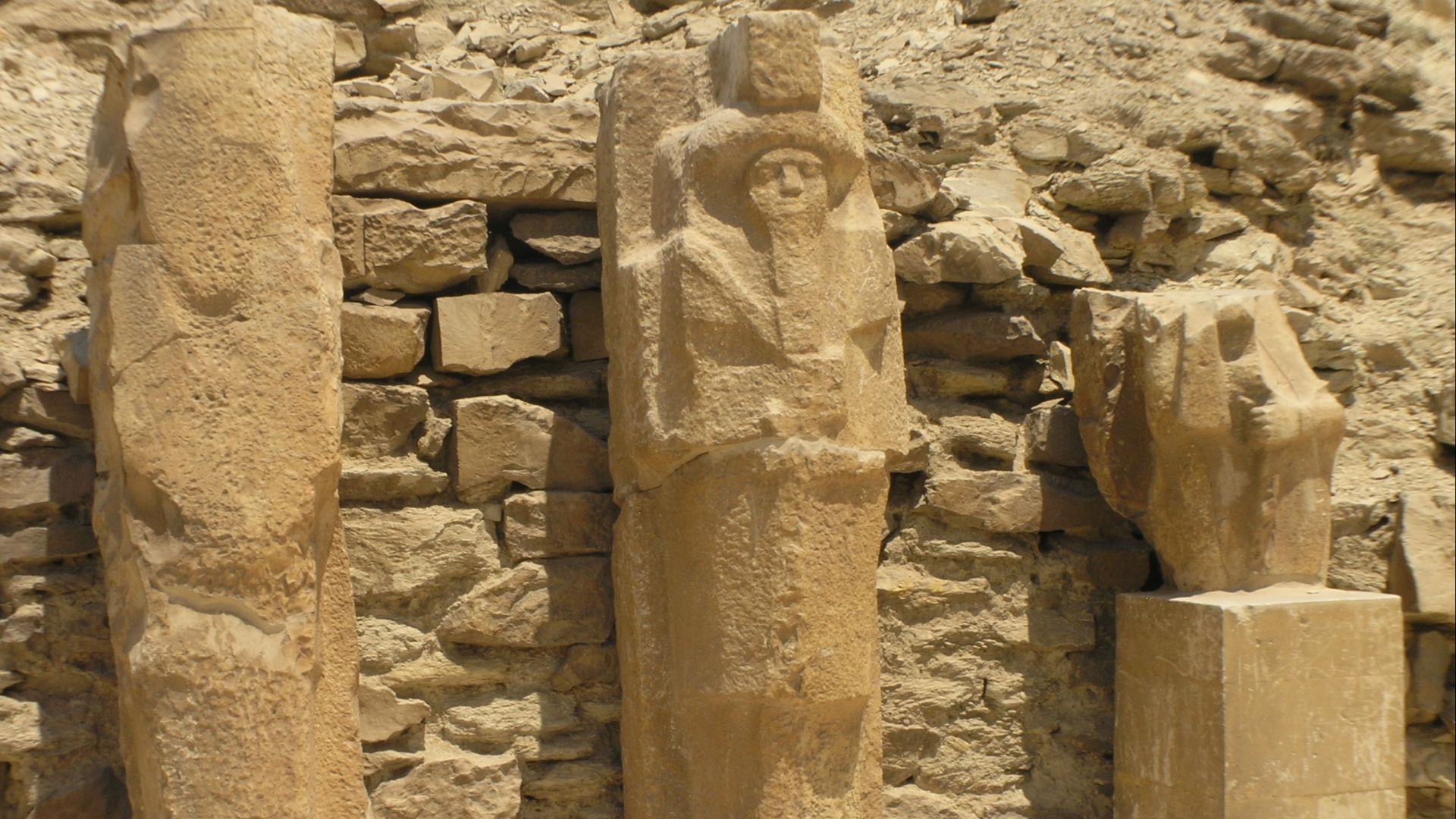 Daniel Mayer, Wikimedia Commons
Daniel Mayer, Wikimedia Commons
A Black Granite Mystery
Another item recovered was a black granite statue, whose identity hasn’t yet been confirmed. It could represent another family member—or perhaps a deity. Black granite was rare and often linked to fertility, rebirth, or protective powers in the ancient world.
With all of these incredible finds, there is still one big piece of the puzzle missing.
The Burial Chamber Is Still Missing
Despite all these finds, archaeologists have not yet located the actual burial chamber. It’s likely hidden deeper underground. Work is ongoing to trace the tomb’s layout and safely excavate whatever chamber might contain Userefre’s remains—or more royal treasures.
Royal Tombs Usually Face East
Userefre’s tomb follows traditional Egyptian layout patterns, including an east-facing false door. The east symbolized rebirth, as the sun rises there each morning. The layout, design, and inscriptions all align with royal funerary customs of the Fifth Dynasty.
Built During the Pyramid Boom
Userefre lived during a major construction era, when Egypt’s kings were still building pyramids and massive temples. His father, Userkaf, built a pyramid nearby at Saqqara. It’s possible Userefre’s tomb was part of a broader family cemetery or royal funerary complex.
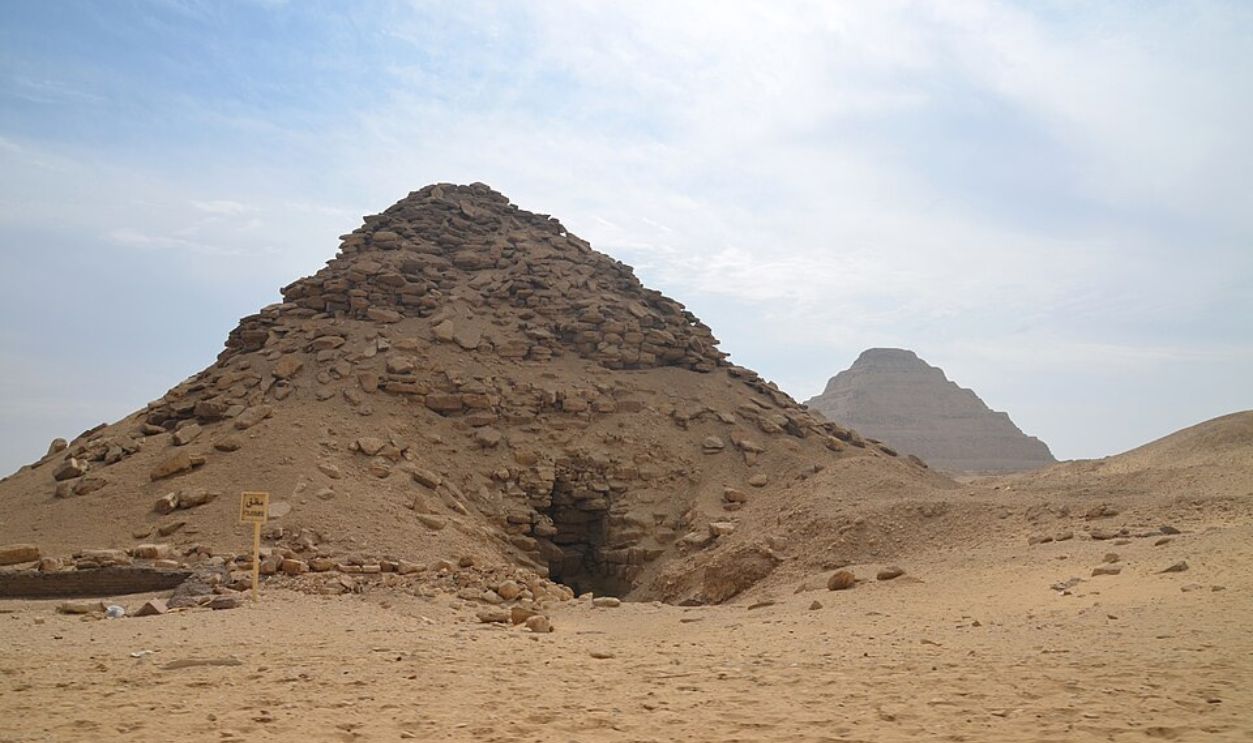 Carole Raddato from FRANKFURT, Germany, CC BY-SA 2.0, Wikimedia Commons
Carole Raddato from FRANKFURT, Germany, CC BY-SA 2.0, Wikimedia Commons
The Fifth Dynasty in a Nutshell
The Fifth Dynasty ruled Egypt from around 2494–2345 BCE, known for its emphasis on solar worship and temple building. Kings like Userkaf and his descendants shifted focus from just pyramids to spiritual power—something that may be reflected in Userefre’s elaborate tomb design.
Who Found It?
The tomb was excavated by an Egyptian archaeological mission working at Saqqara in 2024. The team has not released the full list of experts involved, but the discovery was confirmed by Egypt’s Ministry of Tourism and Antiquities and quickly made international headlines.
 Wessex Archaeology, CC BY 4.0, Wikimedia Commons
Wessex Archaeology, CC BY 4.0, Wikimedia Commons
Why This Find Matters
Many tombs at Saqqara were looted or collapsed over time, but Userefre’s tomb appears largely intact. The scale, inscriptions, and artifacts offer a clear glimpse into elite funerary customs—and hint at even more discoveries to come as excavations continue.
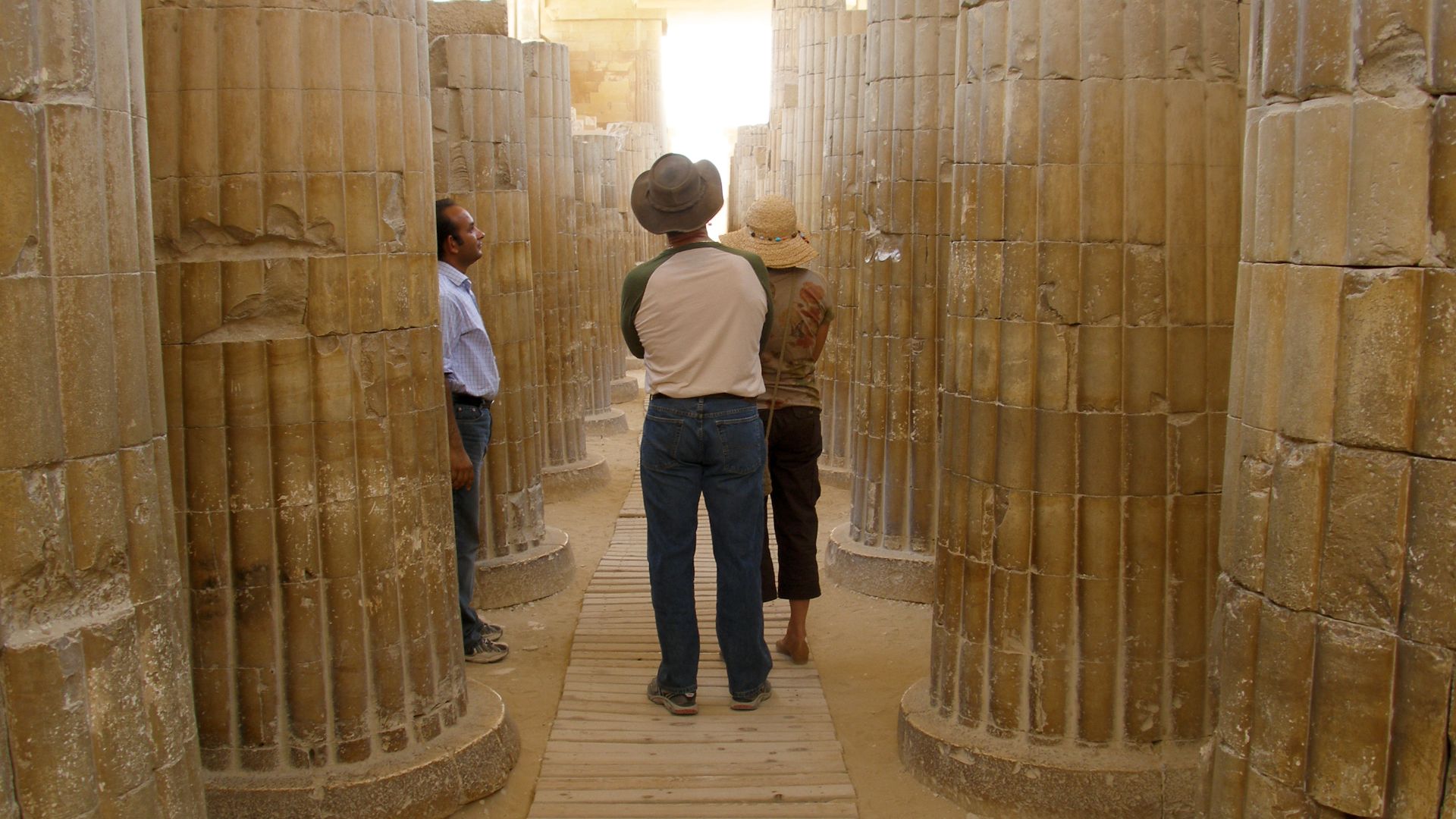 Vyacheslav Argenberg, Wikimedia Commons
Vyacheslav Argenberg, Wikimedia Commons
Could There Be More Doors?
Archaeologists believe Userefre’s tomb could be part of a larger complex, possibly with multiple false doors or chapels dedicated to different aspects of his identity. More chambers may lie buried nearby, waiting to be revealed by ground scans or new digs.
Spiritual Architecture at Its Finest
Everything about the tomb is symbolic—from the east-facing door to the material choices to the layout of statues and offering tables. Ancient Egyptians believed design could guide the soul, protect the dead, and connect the mortal world with the gods.
Not Just a Tomb—A Time Capsule
This tomb isn't just a burial site—it's a time capsule. The statues, tools, carvings, and symbols offer real-time insight into how Egypt’s elite lived, died, and hoped to be remembered. It’s like stepping directly into the past—4,400 years ago.
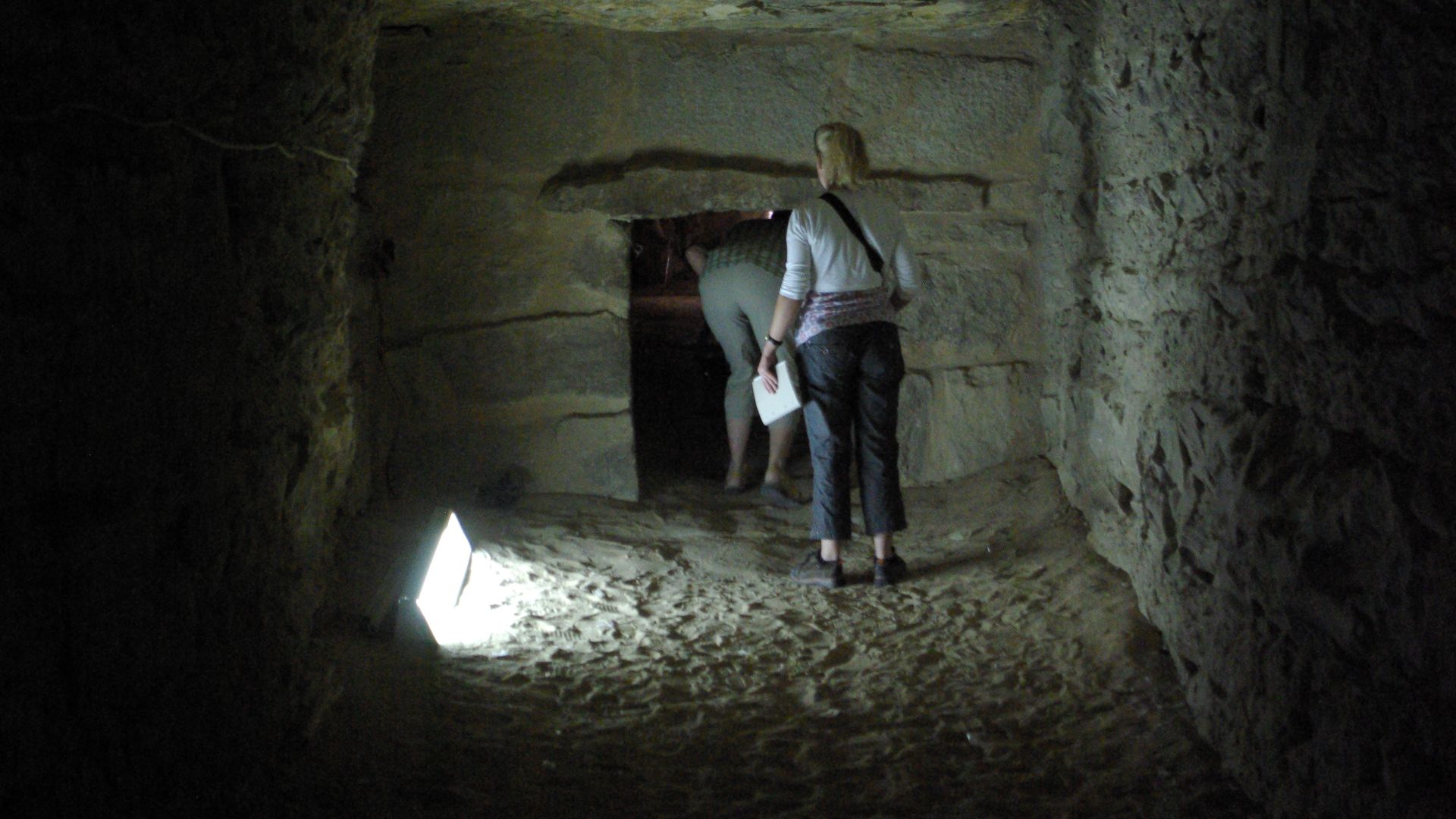 Berthold Werner, Wikimedia Commons
Berthold Werner, Wikimedia Commons
The Media Is Buzzing
Major science outlets like Live Science and Heritage Daily have reported on the find, drawing attention to the pink granite door and its meaning. Egypt’s Ministry of Antiquities also released official statements confirming the tomb’s authenticity and significance.
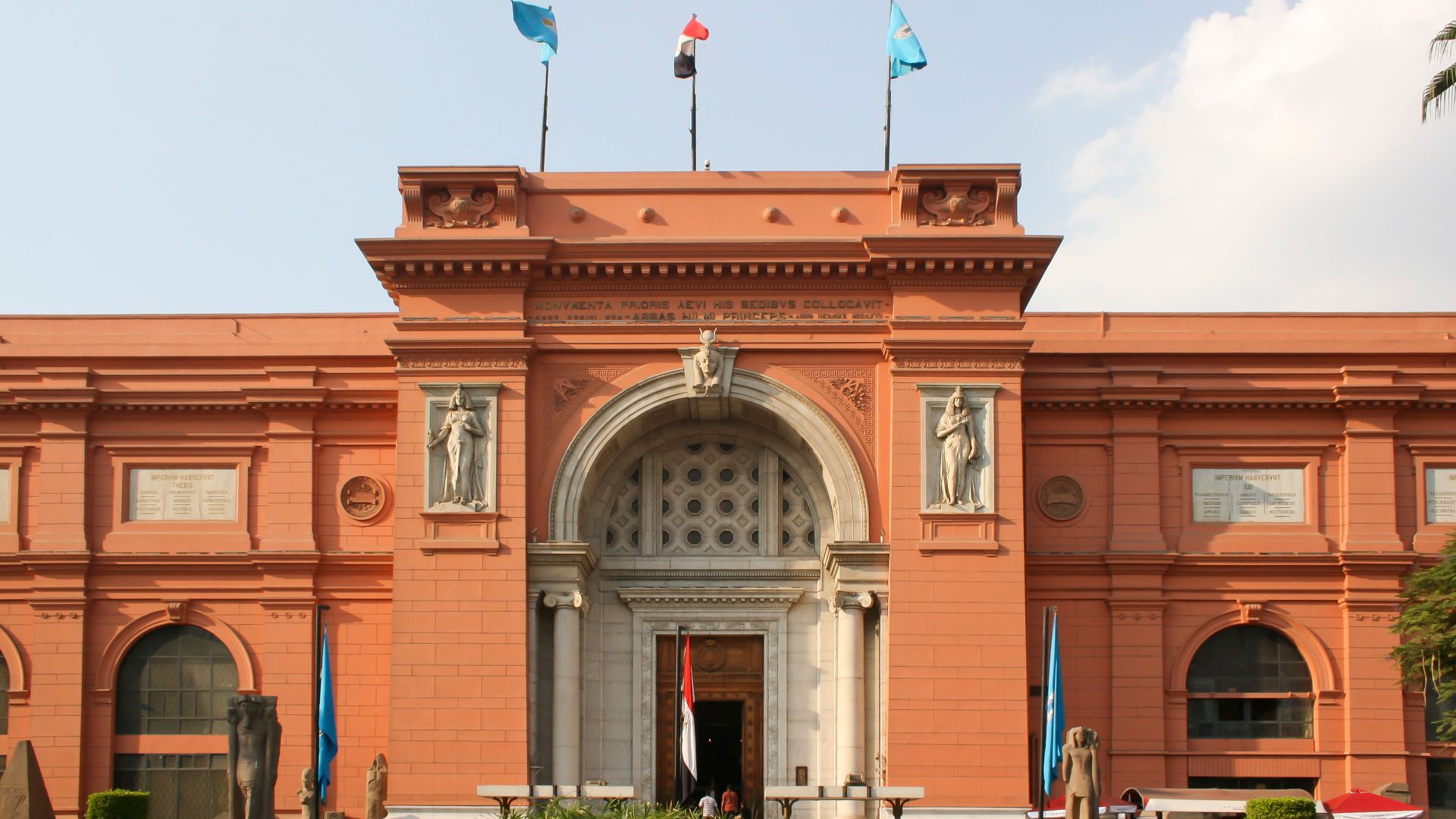 Diego Delso, Wikimedia Commons
Diego Delso, Wikimedia Commons
Tourists Might See It Soon
If the site is stabilized and safely excavated, it could become a new attraction in the Saqqara necropolis. Egypt has been working to boost heritage tourism, and a pink granite royal tomb is exactly the kind of headline-making site people will travel to see.
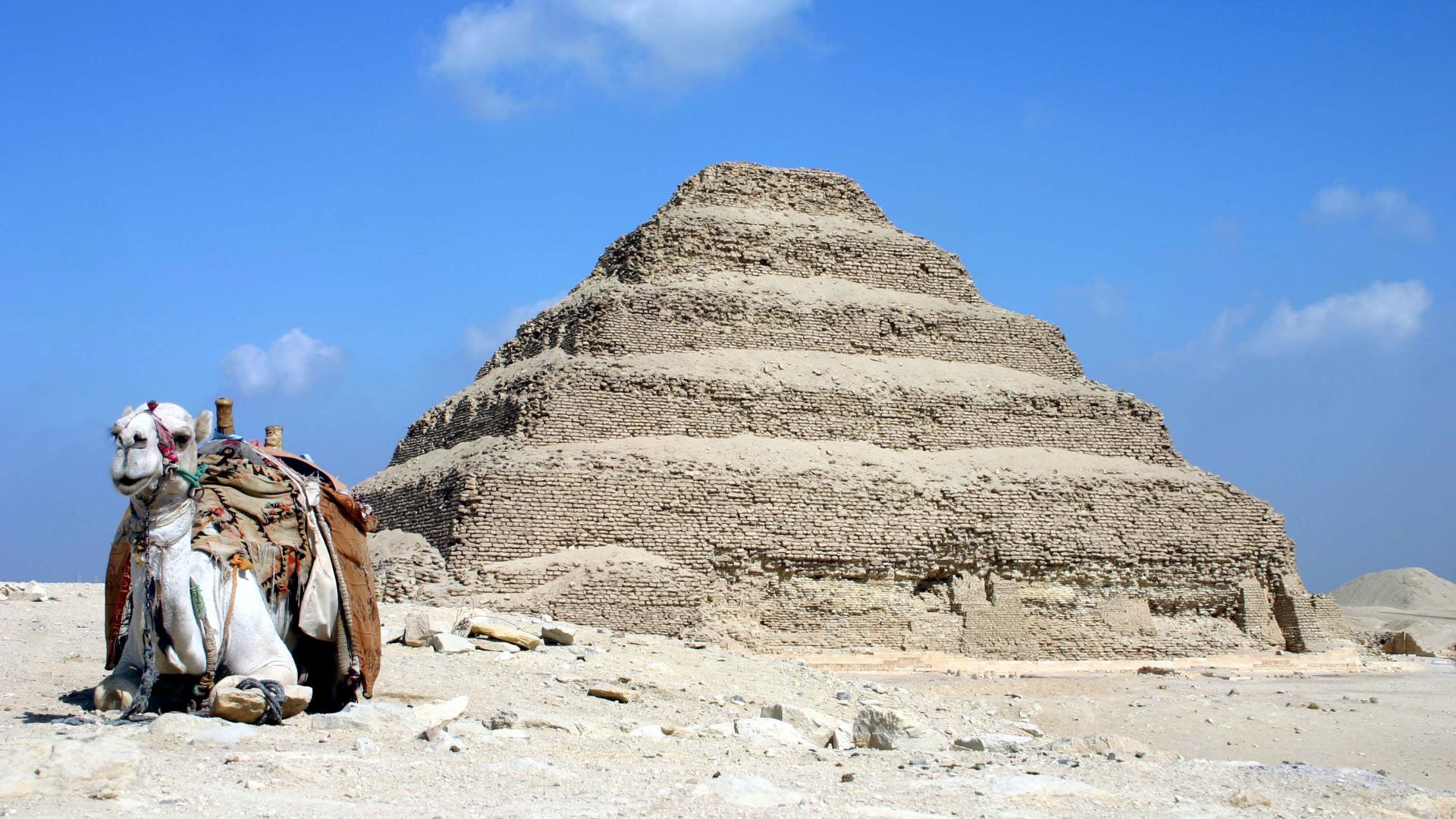 Charles J. Sharp, Wikimedia Commons
Charles J. Sharp, Wikimedia Commons
What’s Next for the Team?
The archaeological team is continuing to search for the burial shaft, possible hidden rooms, and more statues or offerings. Ground-penetrating radar and 3D scanning may help locate voids beneath the floor where the body and main treasures could lie in wait.
One Door, Endless Possibilities
The pink granite door may not open physically, but it has already opened a window into a royal world nearly forgotten. As the excavation continues, each new clue brings us closer to understanding the beliefs, ambitions, and identities of ancient Egypt’s elite.
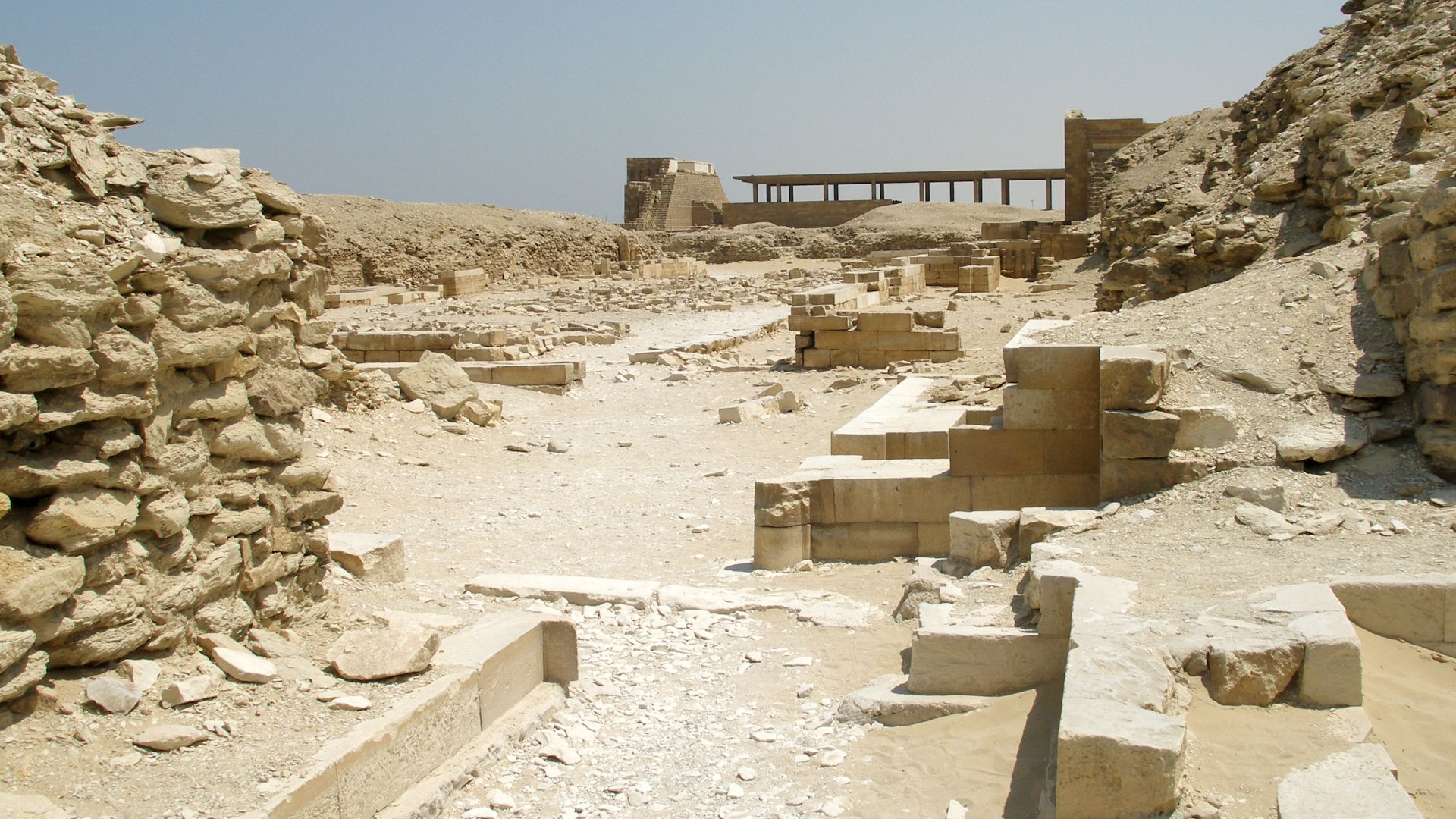 Vyacheslav Argenberg, Wikimedia Commons
Vyacheslav Argenberg, Wikimedia Commons
You May Also Like:
Archaeologists unearthed an ancient Roman warrior mass grave beneath a soccer field in Vienna.
Archaeologists stumble upon an ancient marble statue hidden in a sewer.
Archaeologists Say They Found Ancient Amazonian Art That May Depict Extinct And Mythological Creatures

